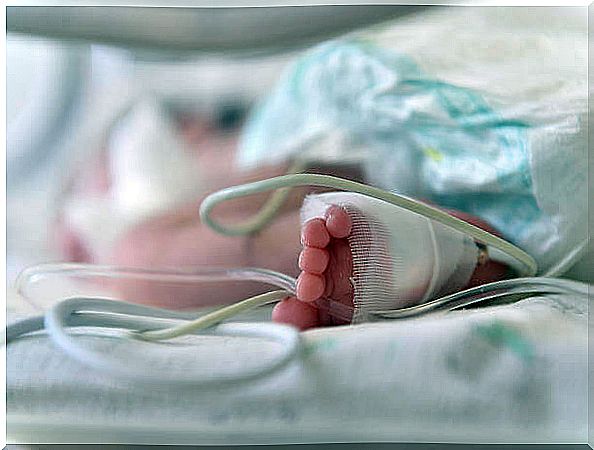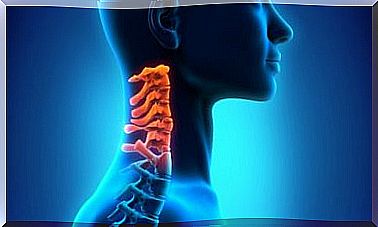The Most Frequent Congenital Heart Diseases
Congenital heart diseases are injuries to one or more parts of the heart’s anatomy. These lesions are already present at the time of birth, since they originate during the embryonic period. According to the Spanish Heart Foundation, they appear in approximately 1% of live newborns.
Since the heart is an essential organ, these injuries will have great relevance in those who develop them. Therefore, it is important to diagnose and treat them as soon as possible. Here we tell you which are the most frequent and some information about them.
What are congenital heart disease?

Congenital heart diseases group a group of diseases that are characterized by anatomical lesions in one or more parts of the heart. It is not known what causes it, but it is believed that they develop due to multiple factors that add up. These factors cause an alteration in the formation of the heart during fetal growth.
Lesions are present from birth. Some will manifest themselves from that moment and others will manifest later, depending on the type of heart disease and its severity. Heart disease of this type can affect anyone regardless of gender.
What are the most frequent?
There are approximately 300 different types of congenital heart disease. They can appear independently or combined with each other in the same person. The prognosis and treatment of each of them will be different. Some of the most common congenital heart diseases are:
- Atrial and interventricular communication: these are holes in the membrane that separates the atria or ventricles. They cause oxygenated blood on one side of the heart to mix with non-oxygenated blood on the other half, losing some of the oxygen.
- Pulmonary valve stenosis: this valve is responsible for regulating the flow of blood from the right ventricle to the lungs. When it is narrower than normal, the ventricle has to do more work and ends up deforming, with the complications that this entails.
- Aortic valve stenosis : the aortic valve is responsible for moderating the flow of blood from the left ventricle to the aorta to reach the rest of the body. The decrease in size means that in this case the left ventricle is the one that ends up working more and becoming deformed. This leads to heart dysfunction.
- Persistent ductus: the ductus is a vessel that communicates in the fetus the aorta and pulmonary arteries so that the fetal circulation works without problems. It usually closes only at birth. If this does not happen, the blood in both arteries mixes, losing part of the oxygen and, in addition, overloading the heart.
Some combined malformations

- Tetralogy of Fallot: it is a combination of 4 malformations. These include ventricular septal defect, pulmonary stenosis, right ventricular hypertrophy, and aortic malformation. This pathology produces crises of lack of oxygen in those who present it. It needs to be corrected with surgery.
- Transposition of the great arteries: In this malformation, the aorta and pulmonary arteries are interchanged. The aorta connects with the right ventricle and the pulmonary, with the left. This creates two parallel circulations. On the one hand, that of non-oxygenated blood, and on the other that of oxygenated blood, which do not communicate. Its repair with surgery is also necessary.
What are the consequences of congenital heart disease?
As we have already mentioned, each type of congenital heart disease will have a different diagnosis, prognosis and treatment. What is common in all of them is that, if they are significant malformations, being present in such a vital organ, they can produce very serious and important consequences.
Therefore, it will be essential to carry out all the relevant medical check-ups both in pregnancy and in the newborn. Some of them can already be diagnosed in the fetus, and even be treated in the womb.
Even so, we have already indicated that some of these malformations, although present from birth, do not begin to show symptoms for a while. For this reason, in the event of any new-onset symptoms or signs, it will be essential to see a doctor so that the necessary studies are carried out.









